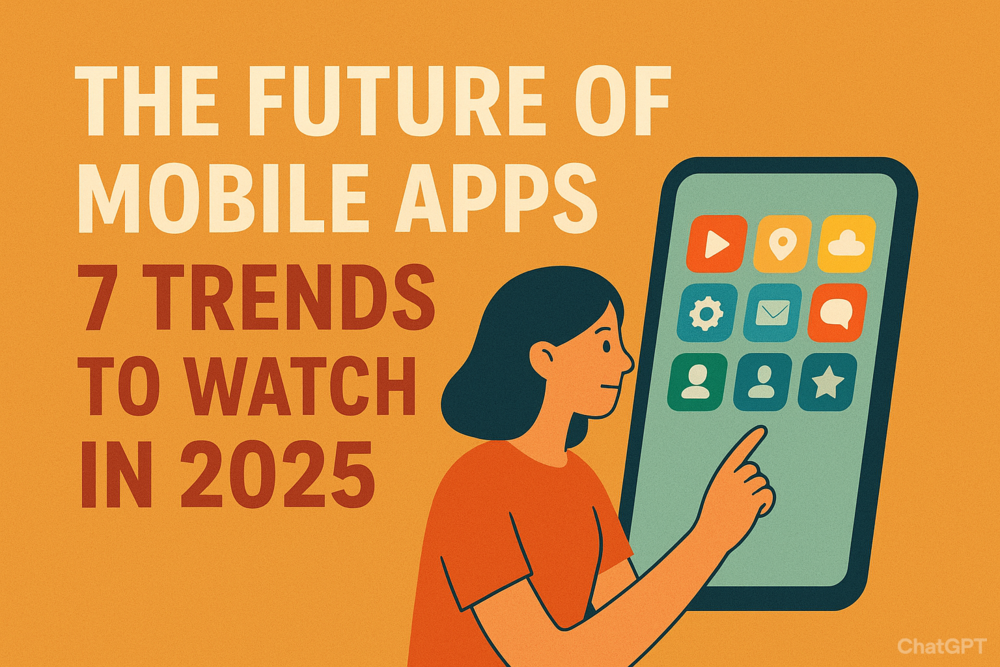The mobile app landscape is continuously changing, driven by increasing advancements in technology as well as changing user expectations. In 2025, the major focus is involved on creating smarter, more integrated, as well as deeply personalized experiences. Here are seven trends expected to redefine mobile apps in 2025.
1. AI-Powered Personalization and Predictive Analytics
In 2025, artificial intelligence (AI) and machine learning (ML) have become crucial support of modern mobile apps. AI and ML are being used critically, with a major focus on hyper-personalization. Apps will use AI for learning from user behavior, preferences, as well as real-time interactions for offering truly tailored experiences. Moreover, this goes beyond simple recommendations to include dynamic content, proactive solutions, as well as personalized user interfaces that are capable of adapting accordingly. Also, we will discover how AI-based chatbots capable of understanding user behavior as well as offering human-like interactions along with predictive analytics.
2. The Rise of Super Apps
Initially inspired by the success of all-in-one platforms in Asia, the super app model is expected to make significant advancements into Western markets as well. Users are increasingly tired of requiring to download and manage several applications for different services. Super apps helps in addressing this issue by combining a variety of functionalities, ranging from messaging and social media to even payments, e-commerce, as well as ride-hailing, all into a single, interconnected ecosystem. This trend is further driven by the increasing consumer preference for convenience as well as efficiency. Super apps aids in developing strong user loyalty along with improving customer experience by combining several services and offering everything user’s need in one place.
3. Enhanced Privacy and Security
The rising integration of mobile apps in our personal and professional lives is driving the demand for robust cybersecurity and data privacy as well as stricter global regulations like GDPR and the CCPA. The regulations make sure that users are aware of how their data is handled. Additionally, the proliferation of privacy-first approach is expected to involve the widespread adoption of biometric authentication zero-trust security architectures, and on-device data processing to minimize the reliance on cloud servers.
4. 5G-Driven App Innovation
The global development of 5G networks is providing the setup for innovation in mobile apps due to ultra-high speeds and low latency of 5G network. 5G is allowing app creators to develop apps that were previously controlled due to bandwidth limitations. Further, the 5G expansion is fueling the growth of high-definition video streaming, real-time gaming, and data-intensive applications. Additionally, it also allow more sophisticated Augmented Reality (AR) and Virtual Reality (VR) experiences, from immersive virtual try-ons for retail to interactive educational simulations.
5. Cross-Platform and Low-Code/No-Code Development
The rising demand for new apps is propelling the progress of cross-platform development and the low-code/no-code movement. The cross-platform frameworks such as Flutter and React Native are growing, which enables developers to write a single codebase that can be deployed on both iOS and Android as well as reduces development time and costs. Alongside, low-code and no-code platforms modify app creation and empower non-technical teams and small businesses to build functional applications with minimal or no coding knowledge.
6. AR, VR, and Spatial Computing
5G provides high speed connectivity whereas AR and VR offer the engagement. The development of devices such as Apple Vision Pro and technological advancements in platforms such as Meta Quest and Snap AR is delivering immersive experiences to the public. In near future, we can witness AR and VR used more in everyday apps. The integration in daily life can range from try-on features for home decor and clothing to interactive educational content that combines the digital as well as physical worlds.
7. Wearable and IoT Integration
The growing proliferation of smartwatches, fitness trackers, as well as other IoT devices is creating a new ecosystem for mobile apps. Presently, mobile applications can easily unify with these wearables, in turn offering real-time data as well as instant notifications. This is mostly relevant for healthcare and wellness industries, where apps can monitor health conditions, track vital signs, as well as offer personalized coaching. Similarly, IoT-enabled smart home devices can controlled as well as managed through mobile apps, in turn adding convenience and intelligence to daily tasks.
Overall, the mobile apps in 2025 include a blend of intelligence, integration, as well as immersion. The most successful apps will be those that not only leverage these trends but also put the user first to offer a seamless, secure, as well as personalized digital experience.
